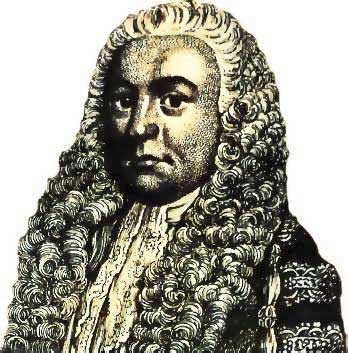 The man behind the discovery of the biological cell was Robert Hooke. His works cover various subjects such as physics, mathematics, architecture, civil engineering, geology, and fossils. His excellent additions to science and engineering are Hooke’s law on elasticity, the cell in living organisms, and famous old buildings in London. Based on his intelligence, he is known as Leonardo Da’ Vinci of England.
The man behind the discovery of the biological cell was Robert Hooke. His works cover various subjects such as physics, mathematics, architecture, civil engineering, geology, and fossils. His excellent additions to science and engineering are Hooke’s law on elasticity, the cell in living organisms, and famous old buildings in London. Based on his intelligence, he is known as Leonardo Da’ Vinci of England.
Biography – Lifespan
Robert Hooke was born in the year 1635 at Freshwater, Isle of Wight, England. His father, John Hooke, was a religious head at Freshwater’s Church of All Saints. Since childhood, he was interested in mechanical devices. Hooke, at first, wanted to become an artist, so his basic education started under Sir Peter Lely – a Dutch painter. Hooke began to realize that the colors’ smell gave him a headache, thus he left the profession and got enrolled in Westminster School in London. He learned Latin, Greek, and geometry in early studies.
After then, he moved to Wadham College, Oxford. There he became assistant to Robert Boyle and John Wilkins whom he helped in building air pumps for inventing pneumatic engine in 1660. Therefore, he was known as the curator of experiments. A curator organizes the experiments and makes them public. In the same year, the Royal Society of London was found and he became one of its members. Among the variety of designs, he gave the idea of the art of flying. During this time, he became a Cutlerian lecturer in Mechanical Arts under Sir John Cutler who trained him on various tools.
Later in 1665, he was appointed as professor of geometry at Gresham College London. After the great fire of September 2nd, 1666, Hooke served as assistant to Christopher Wren for the survey of London. In 1672, when Isaac Newton founded the inverse square law of gravity, Hooke accused him of plagiarism. But Newton was supported more because he was the first to introduce the publically. In 1678, Robert Hooke gave his law on elasticity. Robert Hooke died in the year 1703 and was buried at Saint Helen’s Bishopsgate, London, England.
Contributions and Discoveries
Robert Hooke’s contributions and discoveries hold high value in science. His important works are:
- Hooke’s Law – he gave this law in 1678 which states that force needed to compress or expand the spring by some distance is proportional to distance. This law is also known as the law of elasticity in physics.
- Timekeeping – Hooke’s interest in mechanical tools took him to horology – the science of measuring time. He invented Anchor Escapement – a tool that brings accuracy in the swing of a clock pendulum. This led him to invent Balance Spring in 1660. The balance spring was used in watches for timekeeping.
- Cell – Hooke discovered the cell (biological cell) in 1665 when he conducted experiments through a microscope. He proposed that the basic unit of a living organism is a cell.
- Gregorian Telescope – Hooke built this telescope and observed the rotation of Mars and Jupiter.
Interesting Facts
- Robert Hooke published the book “Micrographia” in 1665 in which he explained various concepts like wave theory of light, refraction, and observations of fossils. This book makes him one of the earlier supporters of the theory of evolution.
- After the great fire of London, as a city surveyor, he surveyed 3000 structures from 1667 to 1672 and drew maps for famous buildings like Royal College of Physicians, Bethlem Royal Hospital, and Montagu House. For this reason, he is known as the founder of map-making and surveying.
- He was one of the founding members of the Royal Society London.





